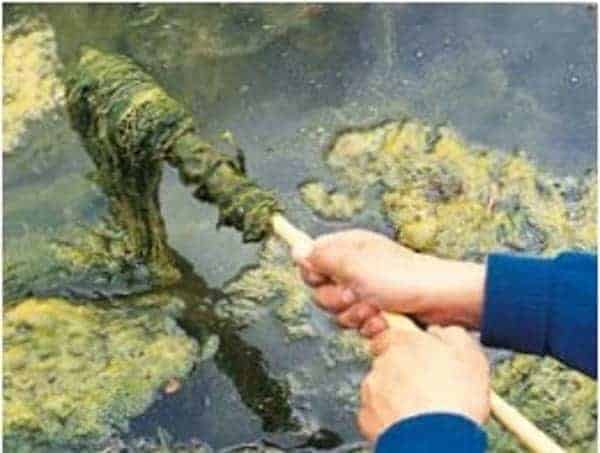
Koi ponds are a beautiful addition to any garden, offering a serene and tranquil space for relaxation and contemplation. However, with the beauty of koi ponds comes the challenge of algae control. Algae can quickly take over a pond, turning the water green and making it difficult to see the fish below. If left unchecked, algae can even harm the health of the fish. Fortunately, there are several effective algae control solutions available, each with its own unique benefits. In this article, we’ll explore the best algae control options for koi ponds.
- Ultraviolet (UV) Clarifiers
UV clarifiers are one of the most effective ways to control algae in a koi pond. They work by using UV light to kill algae cells and prevent them from reproducing. UV clarifiers are easy to install and can be used in conjunction with a pond filter for maximum effectiveness. Additionally, they are safe for fish and other pond life. Buy here
- Algaecides
Algaecides are chemical treatments that kill algae on contact. They are fast-acting and can quickly clear up an algae problem in a koi pond. However, they can be harmful to fish and other pond life, so it’s important to follow the instructions carefully and use them sparingly. Buy here
- Barley Straw
Barley straw is a natural, eco-friendly way to control algae in a koi pond. When barley straw decomposes in water, it releases chemicals that inhibit the growth of algae. Barley straw is safe for fish and other pond life and can be used year-round for ongoing algae control. Buy here
- Aeration
Aeration is the process of adding oxygen to the water in a koi pond. This can be done with a variety of devices, such as fountains, waterfalls, and air stones. Aeration helps to promote the growth of beneficial bacteria, which can help to control algae growth. Additionally, aeration can improve the overall health of the pond, making it a great option for ongoing algae control. Buy here
- Beneficial Bacteria
Beneficial bacteria are naturally occurring microorganisms that help to control algae growth in a koi pond. These bacteria work by consuming excess nutrients in the water, which algae need to grow. Beneficial bacteria can be added to a koi pond in the form of liquid or powder, and they are safe for fish and other pond life. Buy here
best algae control for koi pond people also ask
What kills algae but won’t hurt fish?
There are several options to kill algae that won’t harm fish in a pond. Ultraviolet clarifiers and beneficial bacteria are both safe and effective methods to control algae without harming fish or other pond life. Additionally, barley straw and aeration are natural and eco-friendly options that can help to control algae growth without harming fish. It’s important to follow the instructions carefully and use algaecides sparingly, as they can be harmful to fish and other pond life.
Why is my koi pond full of algae?
There are several reasons why a koi pond may be full of algae. Here are some possible causes:
- Excess Nutrients: Algae require nutrients to grow, and if there are too many nutrients in the water, it can lead to excessive algae growth. Common sources of excess nutrients include overfeeding fish, fish waste, decaying plants, and runoff from fertilizers or nearby gardens.
- Sunlight: Algae require sunlight to grow, and if there is too much sunlight in your pond, it can promote their growth. Ponds that receive direct sunlight for several hours a day are more likely to experience excessive algae growth.
- Lack of Aeration: Aeration helps to increase oxygen levels in the water, which can promote the growth of beneficial bacteria that help to control algae growth. If your pond doesn’t have adequate aeration, it can contribute to the growth of algae.
- Poor Water Quality: Poor water quality can contribute to the growth of algae. If your pond has high levels of ammonia or nitrate, it can promote the growth of algae. It’s important to test your pond water regularly and maintain proper water quality parameters.
- Imbalanced Ecosystem: A healthy pond ecosystem requires a balance between fish, plants, and beneficial bacteria. If any of these components are out of balance, it can contribute to the growth of algae.
In conclusion, excess nutrients, sunlight, lack of aeration, poor water quality, and imbalanced ecosystems are all potential causes of excessive algae growth in a koi pond. By identifying and addressing the underlying cause of the problem, you can take steps to prevent future algae growth and maintain a healthy and beautiful pond.
In conclusion, there are several effective ways to control algae in a koi pond. Ultraviolet clarifiers, algaecides, barley straw, aeration, and beneficial bacteria are all great options for keeping algae under control. When choosing an algae control method, it’s important to consider the needs of your pond and the health of your fish. By taking a proactive approach to algae control, you can ensure that your koi pond remains a beautiful and healthy oasis for years to come.
